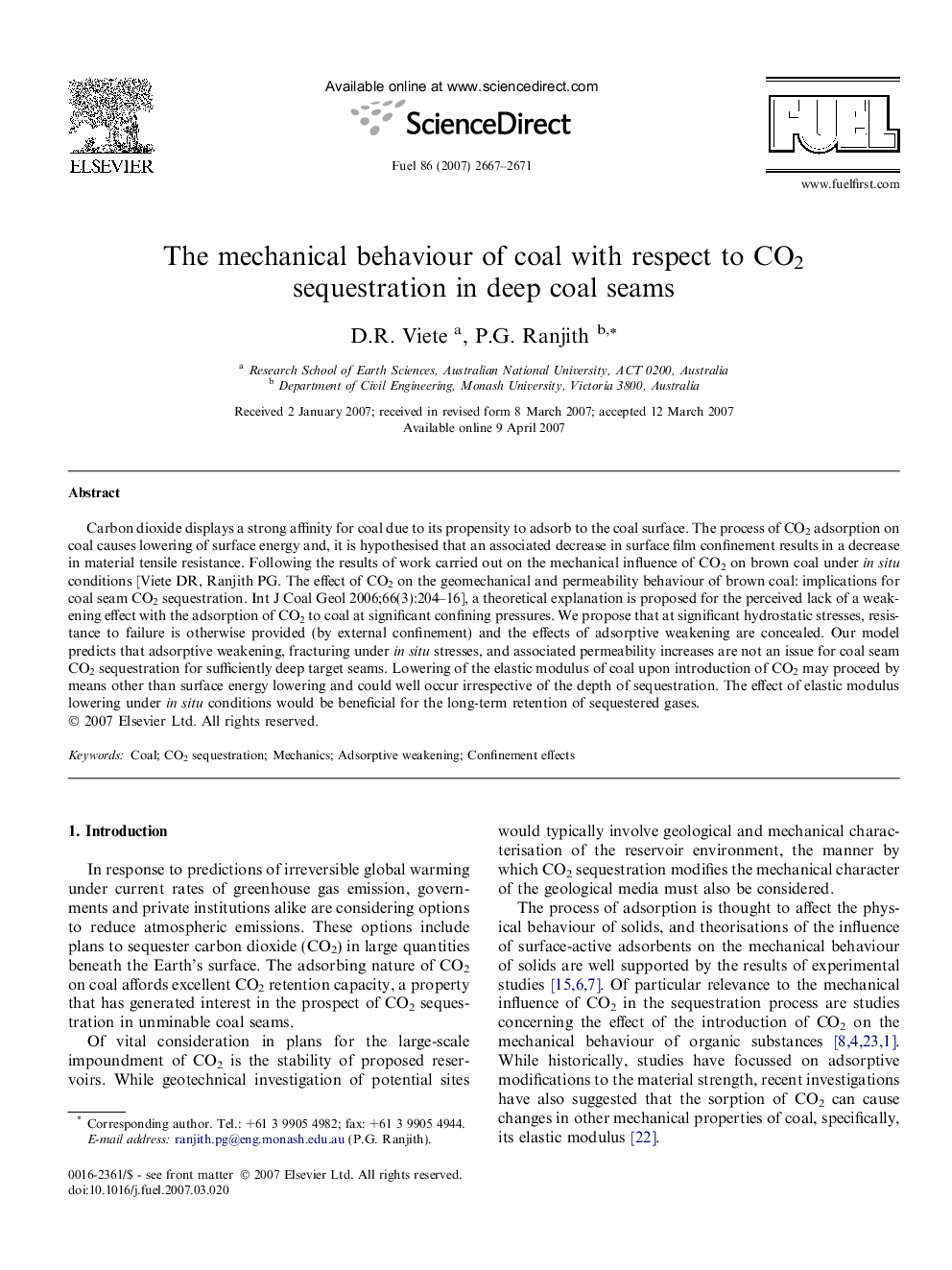| Article ID | Journal | Published Year | Pages | File Type |
|---|---|---|---|---|
| 208075 | Fuel | 2007 | 5 Pages |
Carbon dioxide displays a strong affinity for coal due to its propensity to adsorb to the coal surface. The process of CO2 adsorption on coal causes lowering of surface energy and, it is hypothesised that an associated decrease in surface film confinement results in a decrease in material tensile resistance. Following the results of work carried out on the mechanical influence of CO2 on brown coal under in situ conditions [Viete DR, Ranjith PG. The effect of CO2 on the geomechanical and permeability behaviour of brown coal: implications for coal seam CO2 sequestration. Int J Coal Geol 2006;66(3):204–16], a theoretical explanation is proposed for the perceived lack of a weakening effect with the adsorption of CO2 to coal at significant confining pressures. We propose that at significant hydrostatic stresses, resistance to failure is otherwise provided (by external confinement) and the effects of adsorptive weakening are concealed. Our model predicts that adsorptive weakening, fracturing under in situ stresses, and associated permeability increases are not an issue for coal seam CO2 sequestration for sufficiently deep target seams. Lowering of the elastic modulus of coal upon introduction of CO2 may proceed by means other than surface energy lowering and could well occur irrespective of the depth of sequestration. The effect of elastic modulus lowering under in situ conditions would be beneficial for the long-term retention of sequestered gases.
